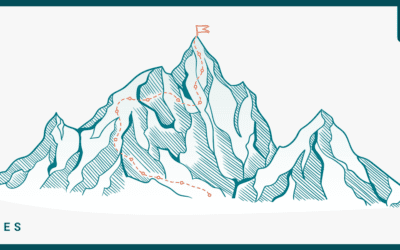How did you get started in tech and entrepreneurship?
I officially started my career in tech as a Software Developer in 2016, but even before that I’d always been very interested in technology. After taking a Web Design course as an undergrad, I knew I wanted to dig deeper into building websites, so I changed my major from Graphic Design to Computer Science. After landing an internship as a Software Developer, I started exploring online and reading books to learn more about UI Design and UX.
My start in entrepreneurship was very natural for me. While in college, I needed to make some money, so I started using my digital art skills to create custom illustrations. I also used my graphic design skills to make various branding and design assets. I marketed my services on social media and created illustrations of notable figures and influencers to get a buzz for my work. I was able to sustain myself with my illustration and graphic design services until I landed my internship. This was my first taste of entrepreneurship, and I loved it.
What advice do you have for anyone with an idea or who is currently ‘entrepre-curious’?
Don’t overthink it! Overthinking can cause you to get stuck in the ideating phase and never leave. As a perfectionist, I understand how hard this next piece of advice is, but it’s necessary: just get something out. The longer an idea stays in your head, I’ve got bad news for you… it probably isn’t leaving.
What idea are you working on right now?
Flex UX Work, which connects UX talent seeking freelance and contract work with clients. The process is simple, UX talent applies to our talent pool. Once approved, they’ll be able to complete their talent profile and begin searching for projects that fit their needs.
Want to check Flex UX Work out in action? Learn more here. Flex UX Work is now accepting UX talent applications.
You can also find Flex UX Work on Instagram, Twitter, and Facebook.
What made you decide and how did you start taking steps to actively work on FlexUX?
I decided to work on Flex UX Work for two reasons.
- I was having a tough time finding short-term UX projects, so I wanted to create a solution for the problem.
- I had a goal to release something, anything, by the end of the year. I looked at the calendar and thought, “I’ve got to speed up this process to reach my goal.”
I started actively working on the idea by:
- Analyzing current solutions and thinking of how they could be improved.
- Mapping out an ideal solution for the problem.
- Determining how the ideal solution could be simplified into an MVP.
- Creating a proof of concept.
- What was your biggest takeaway or most helpful to your business from Foundations?
My biggest takeaway from Foundations was that you focus on solving a problem and not necessarily the method of getting there. I learned not to attach myself to a product, but instead focus on providing a solution to a problem. What really helped me bring Flex UX Work to fruition was learning how to create a proof of concept to get quick feedback and validate my idea.
What would you tell someone considering enrolling in Foundations or a future AppThink course?
Do it! It doesn’t matter if you’re technical or non-technical. The course is still beneficial. It’s so helpful to learn with other entrepreneurs and ideate together. Also, the Foundations course provides a lot of insight in a short amount of time. Two weeks of information shifted my mindset and helped me leave the never-ending loop of “is this good enough to release now?”. Foundations taught me that perfection isn’t the goal, instead, I should focus on getting feedback and be open to pivoting.



